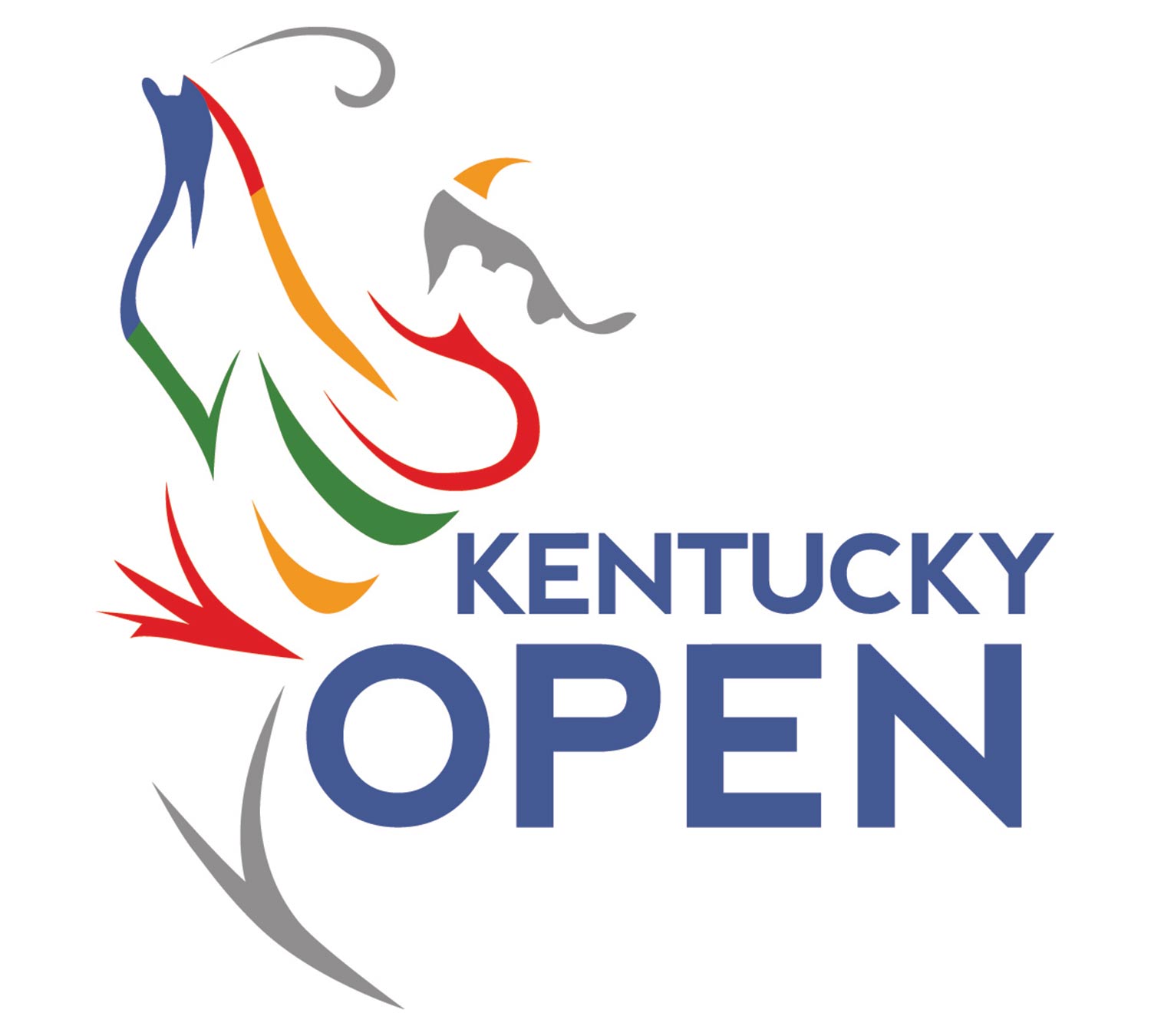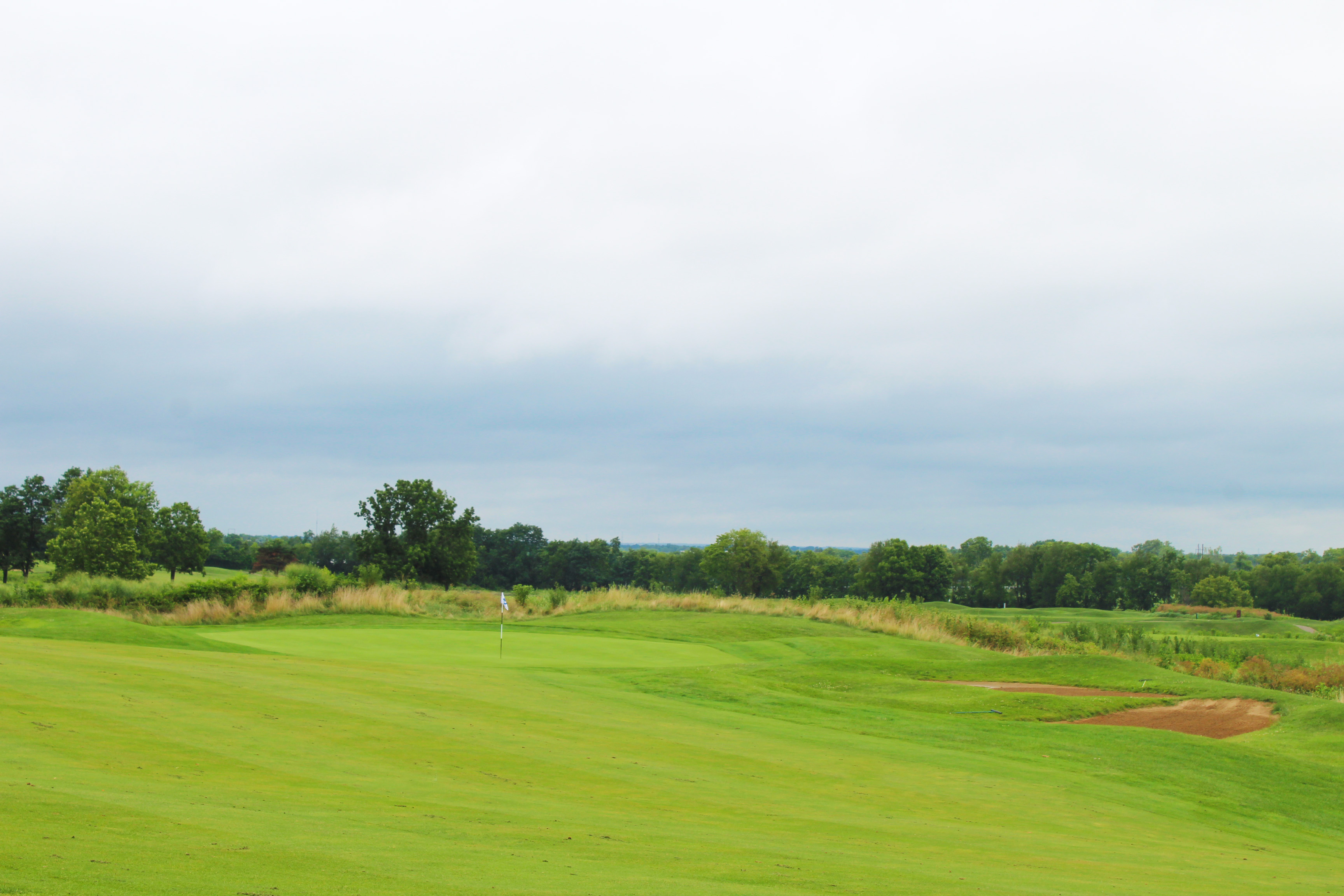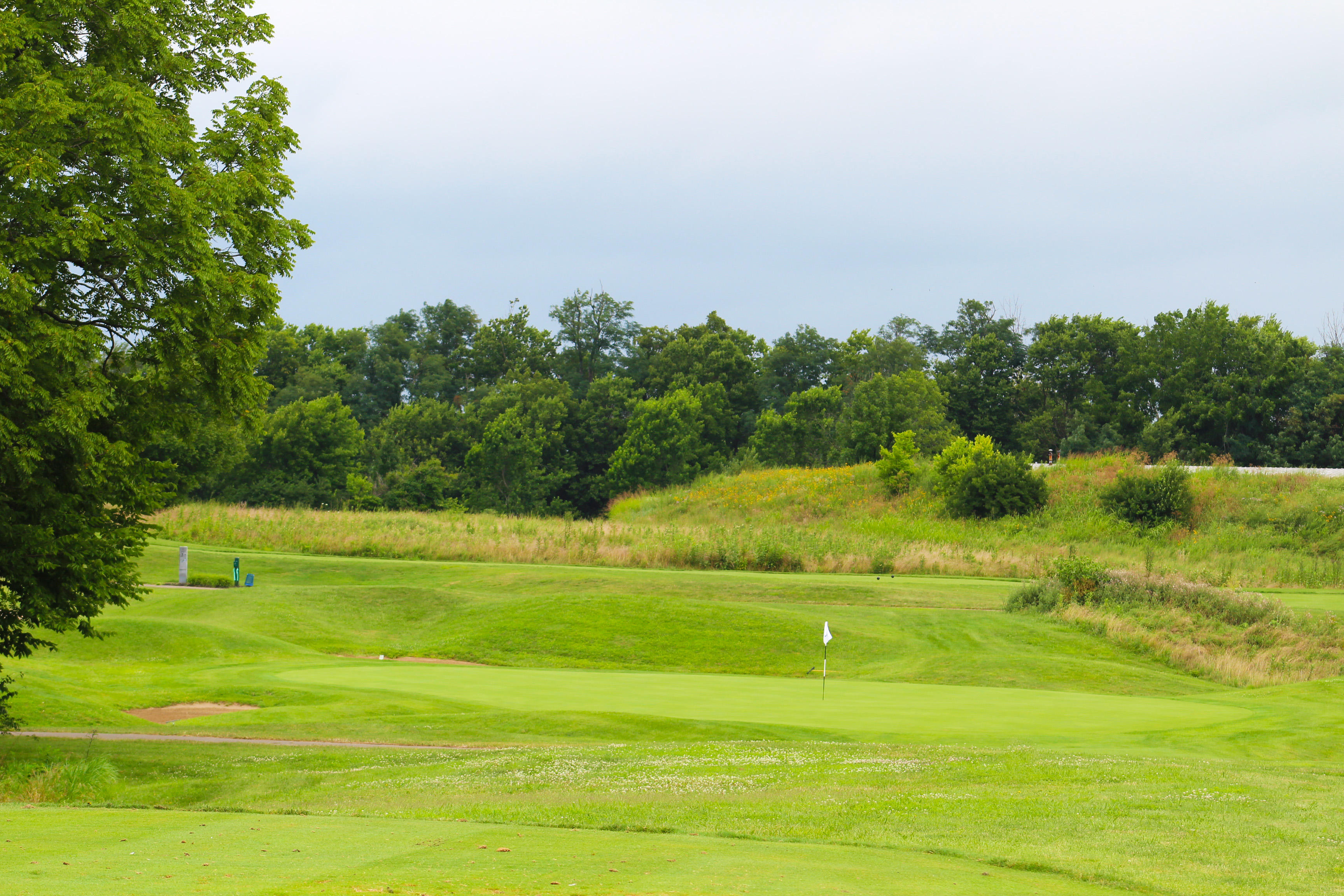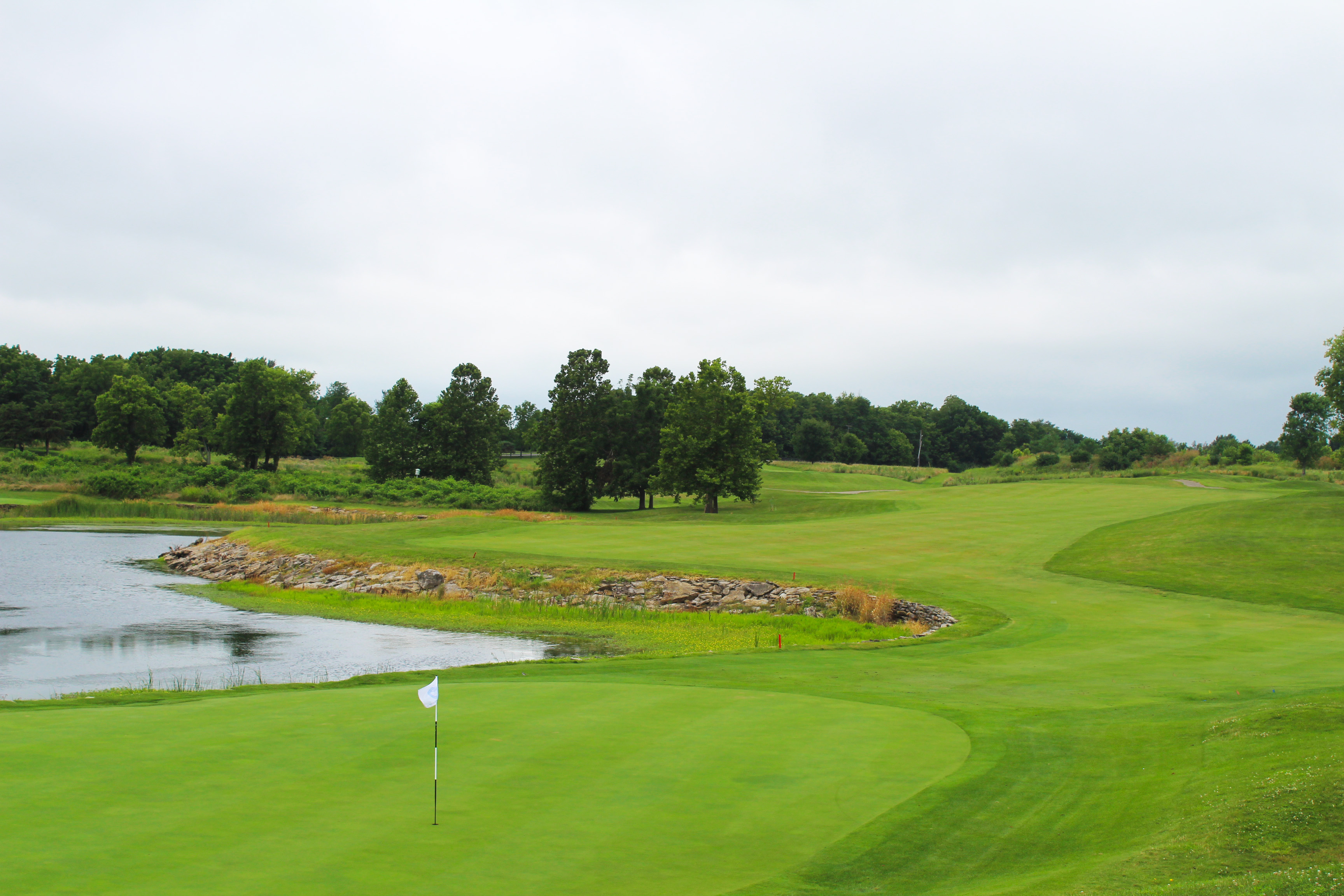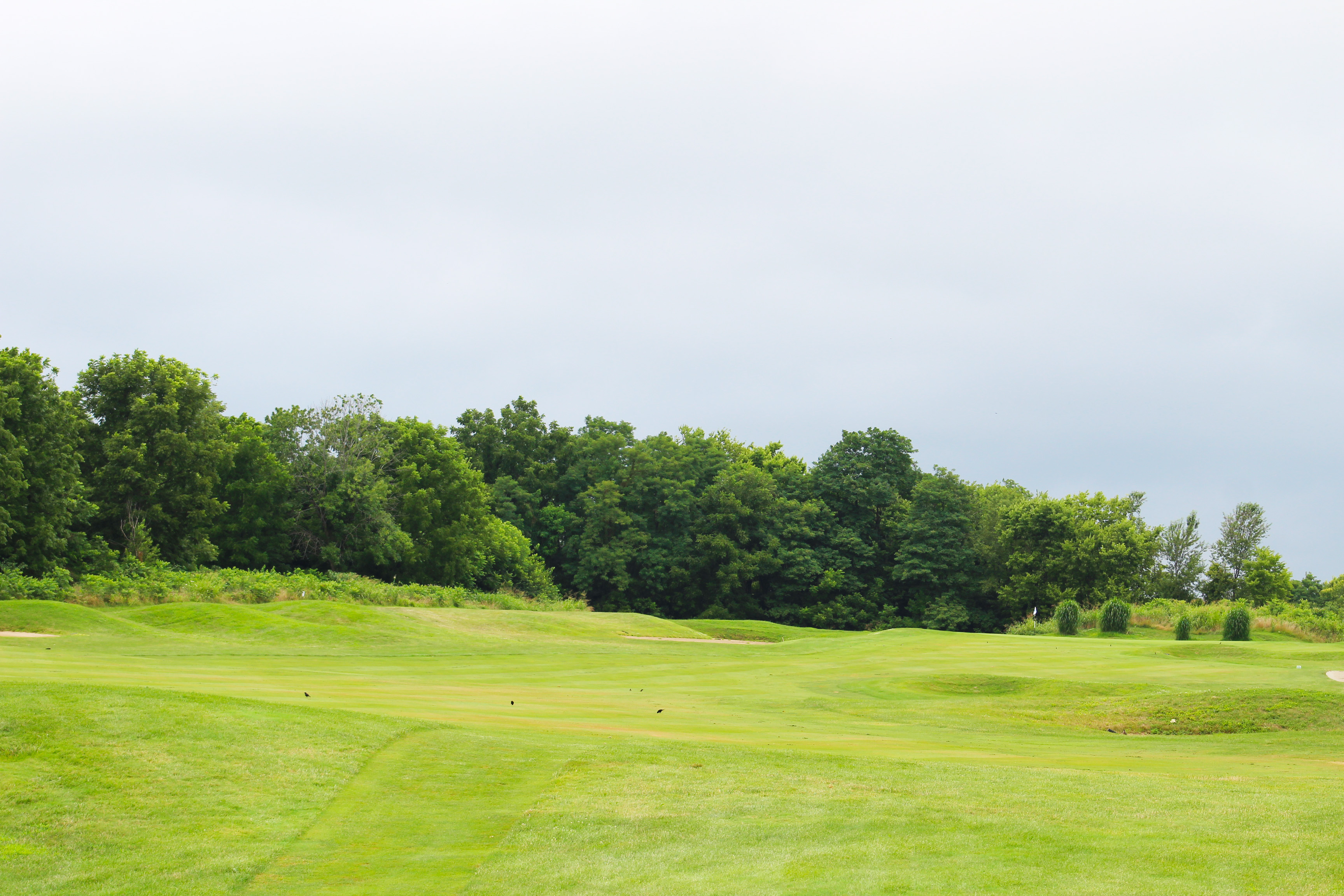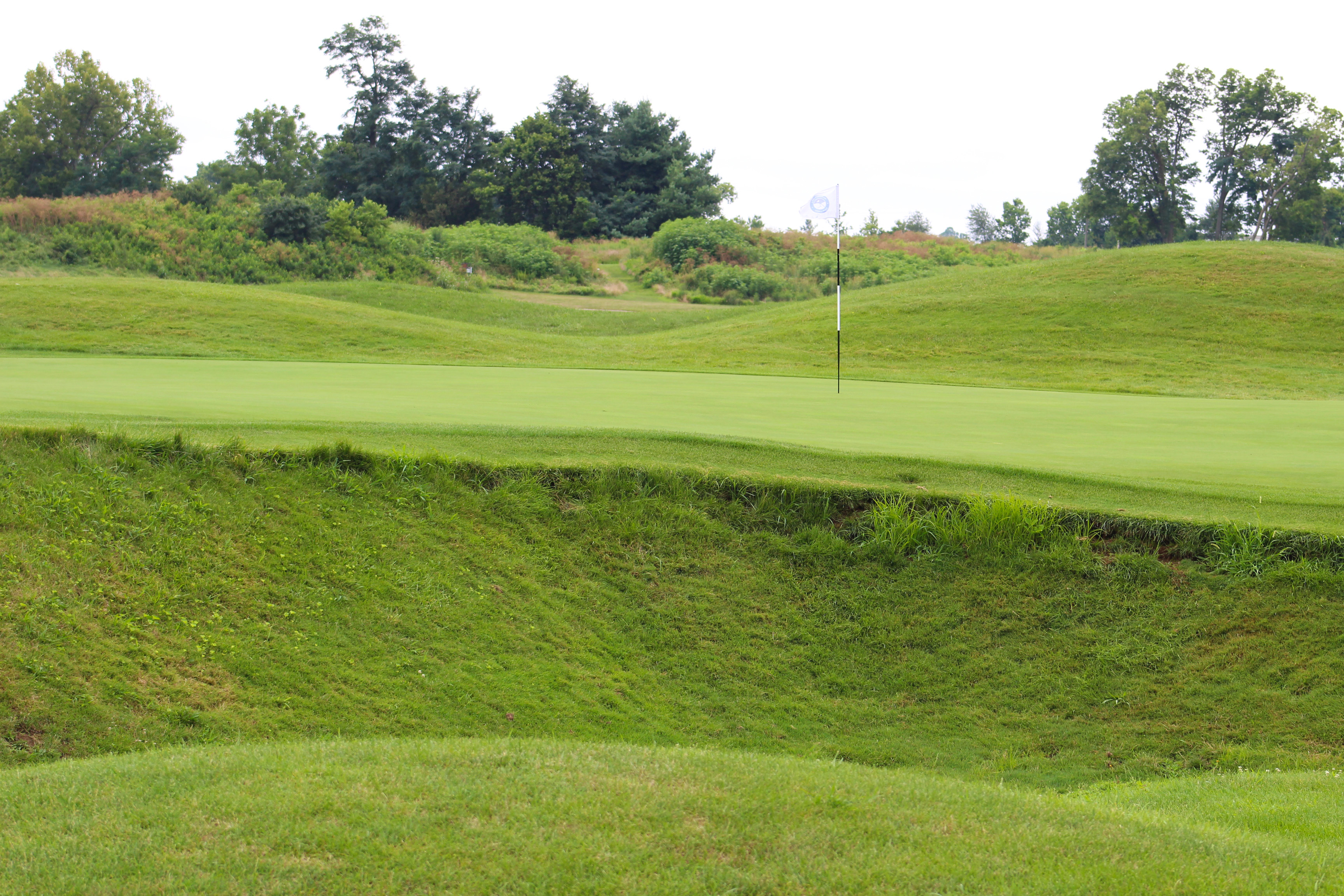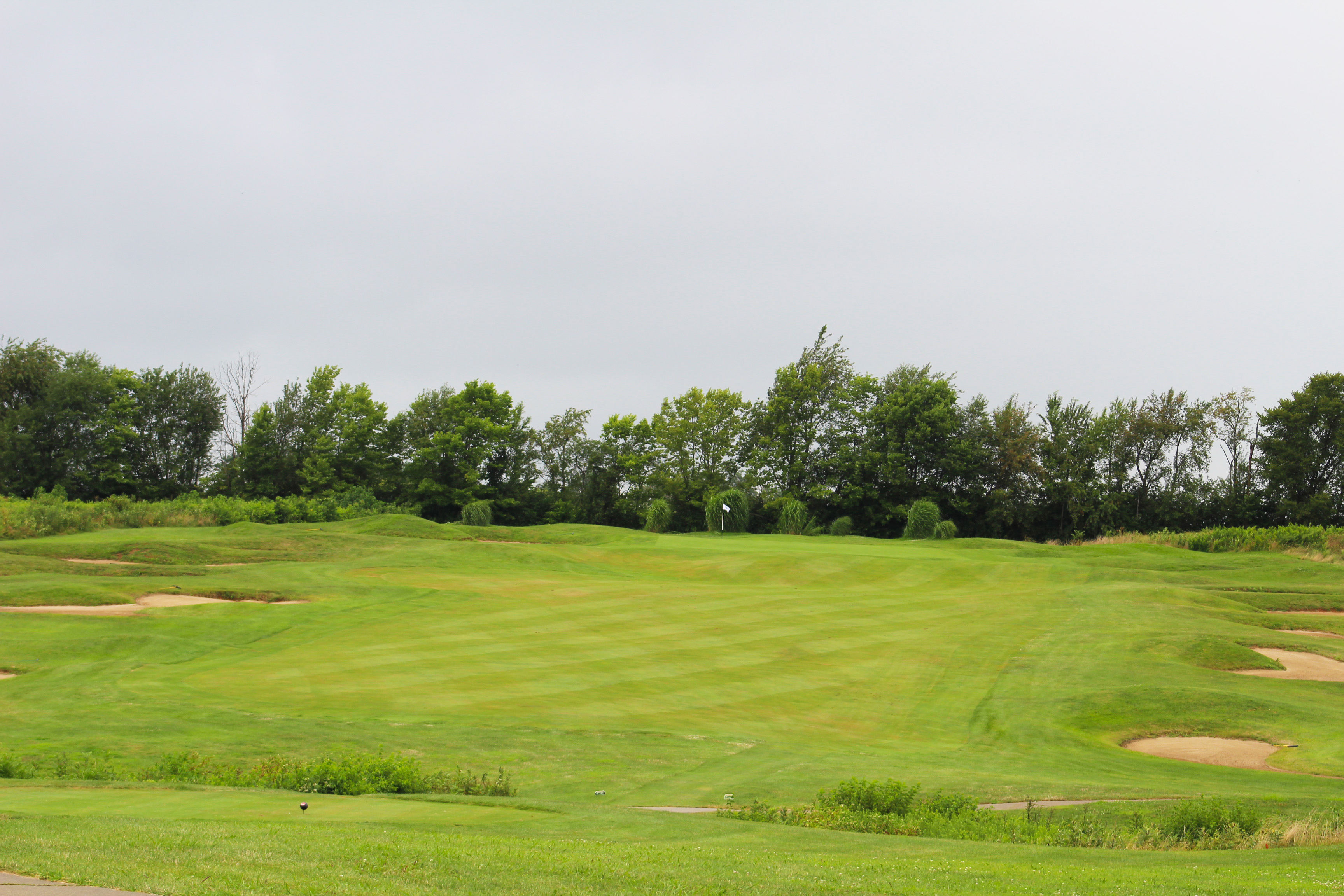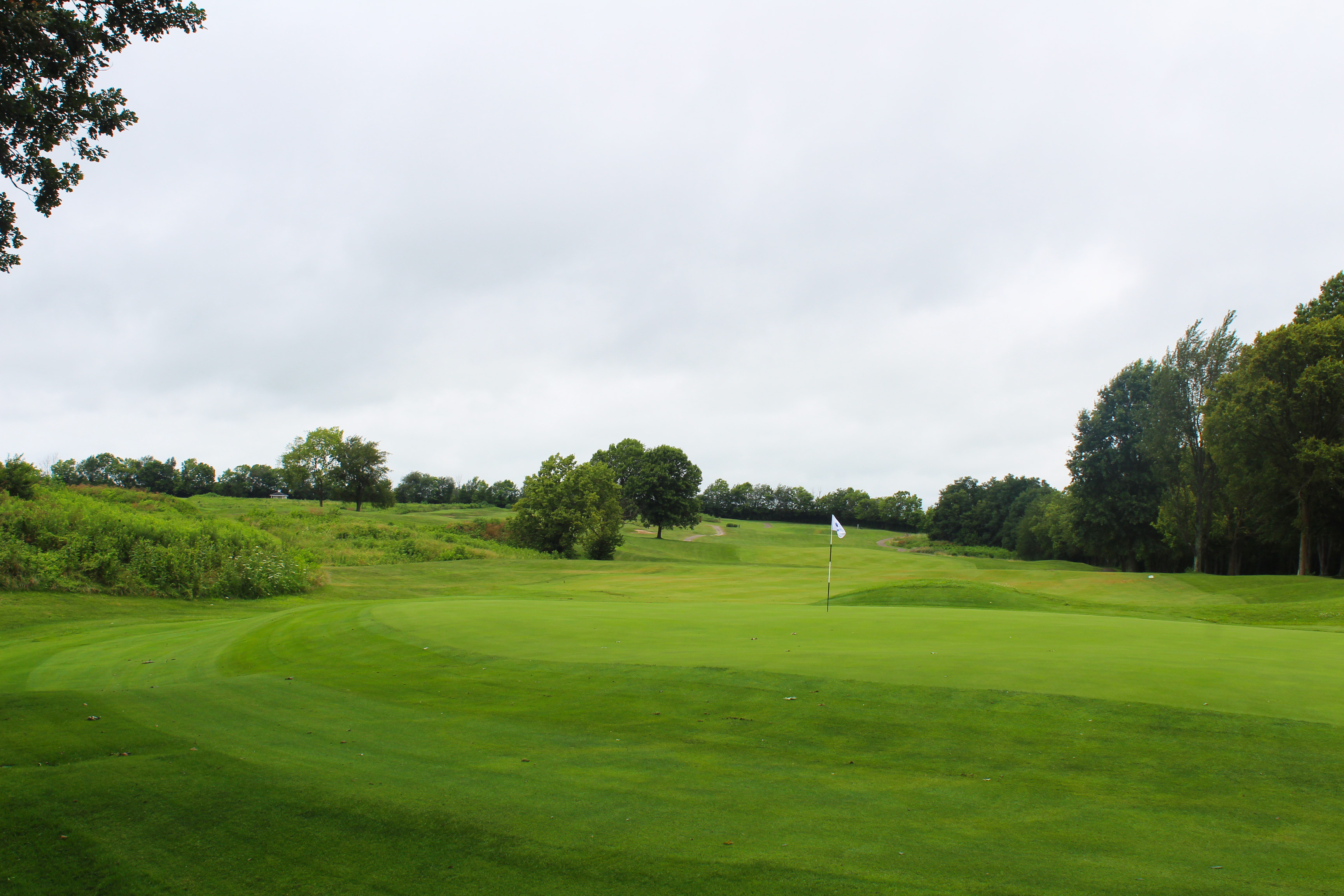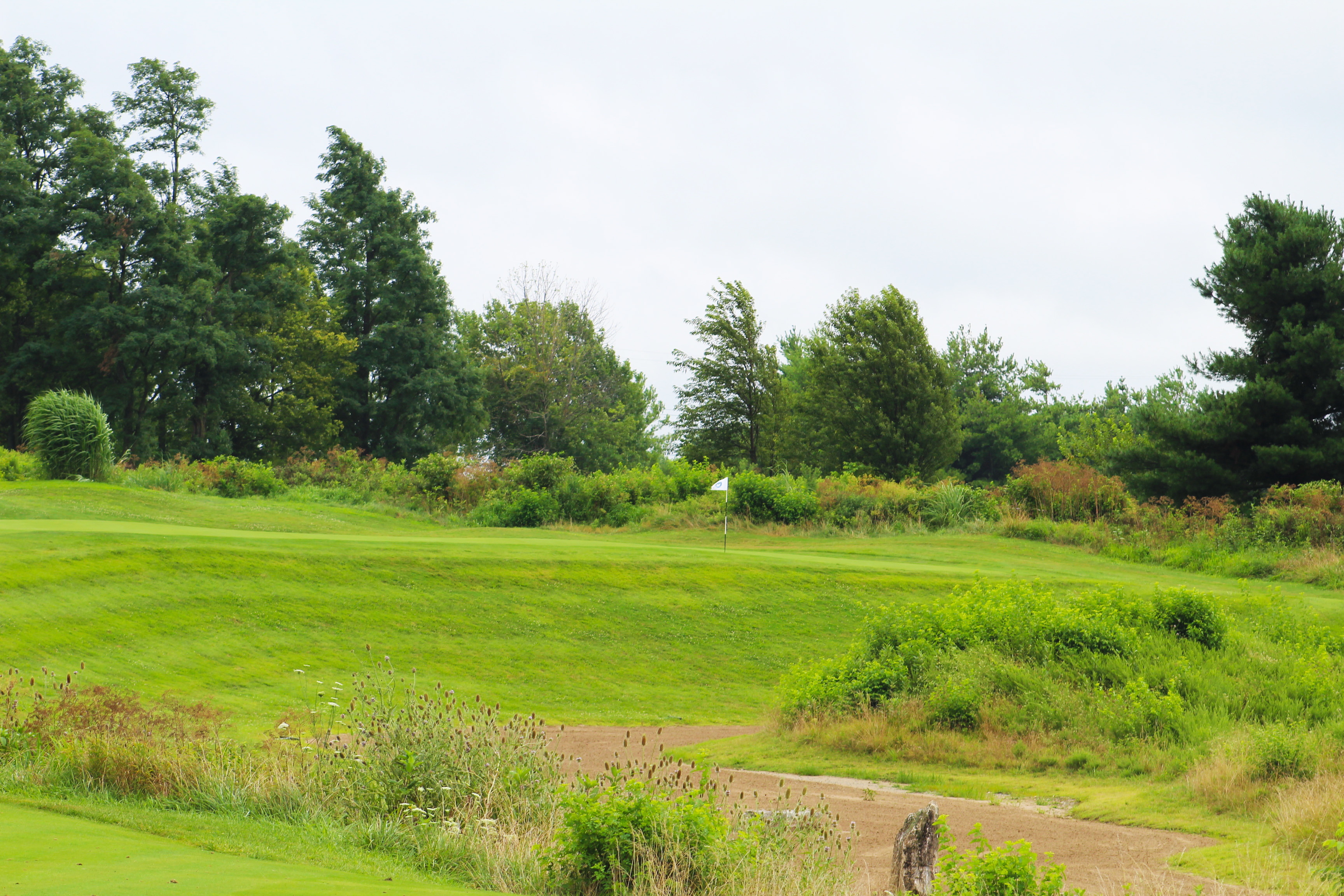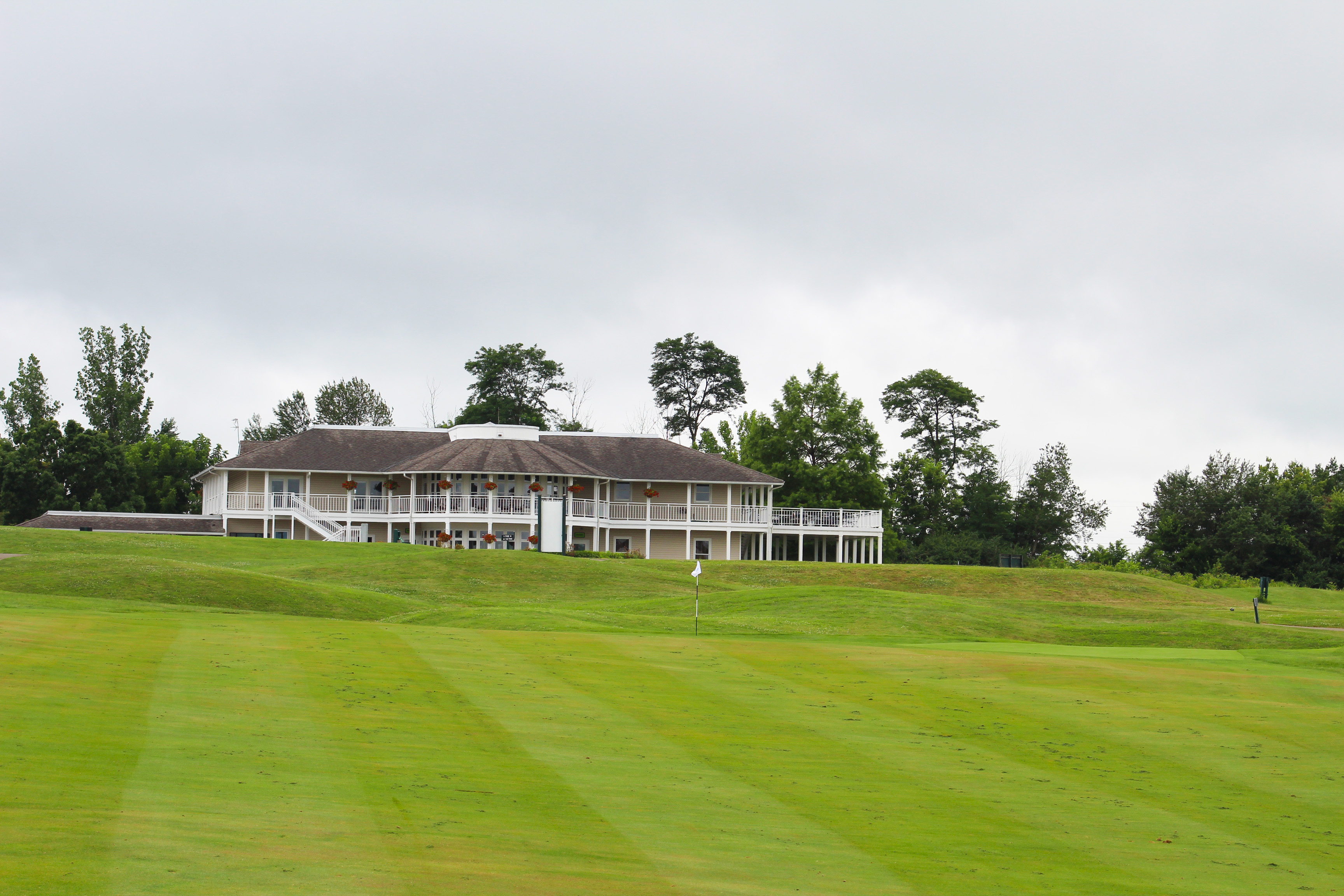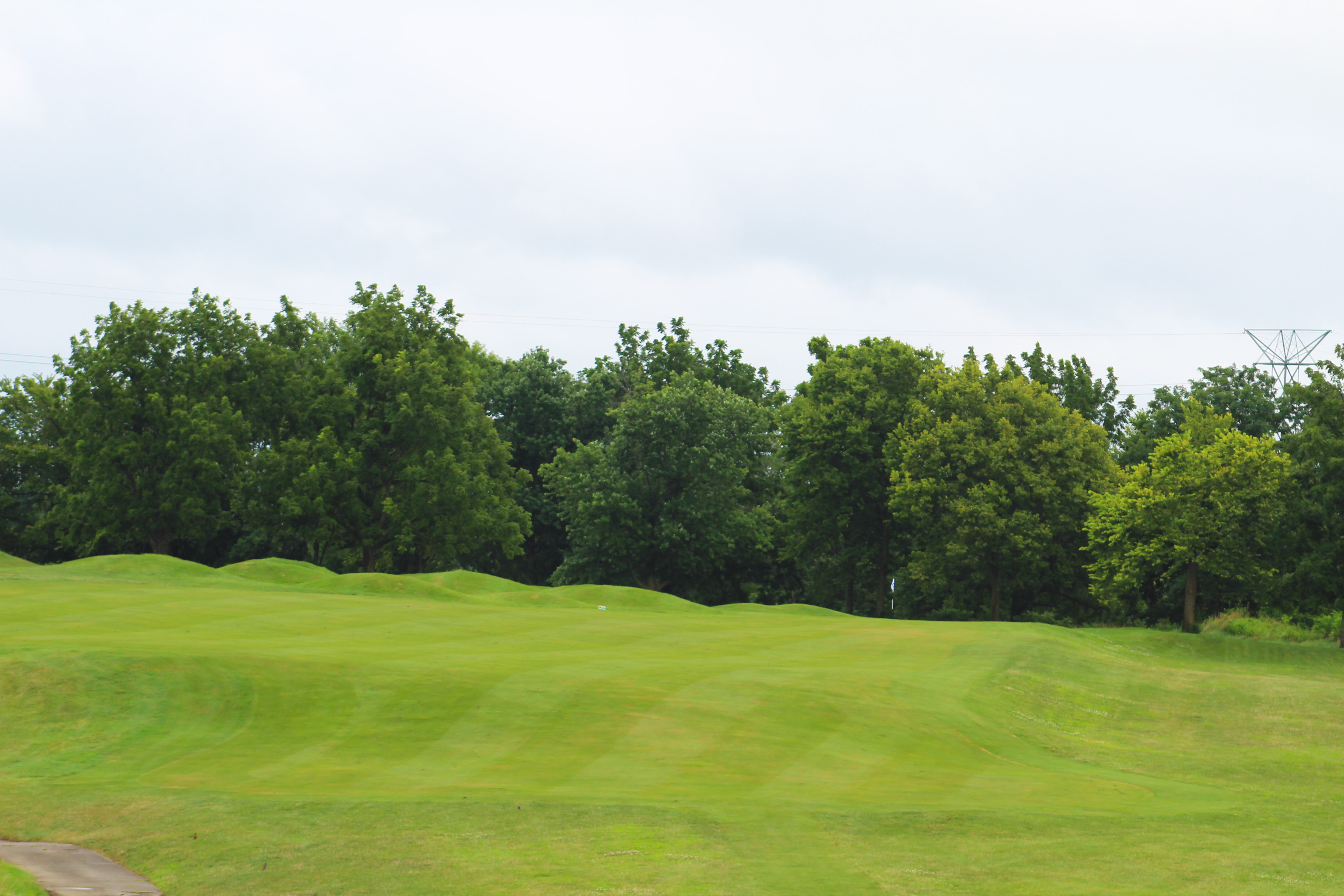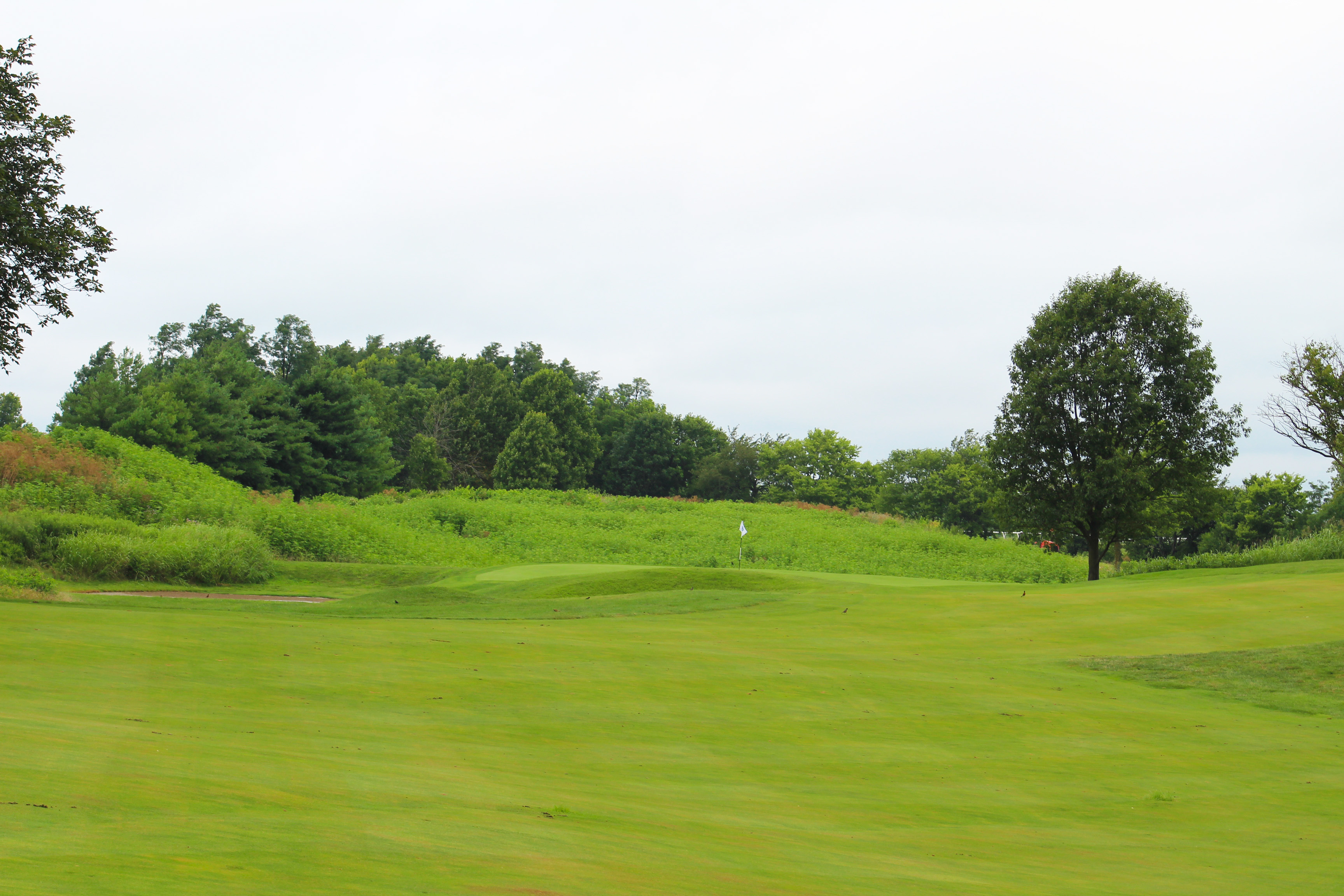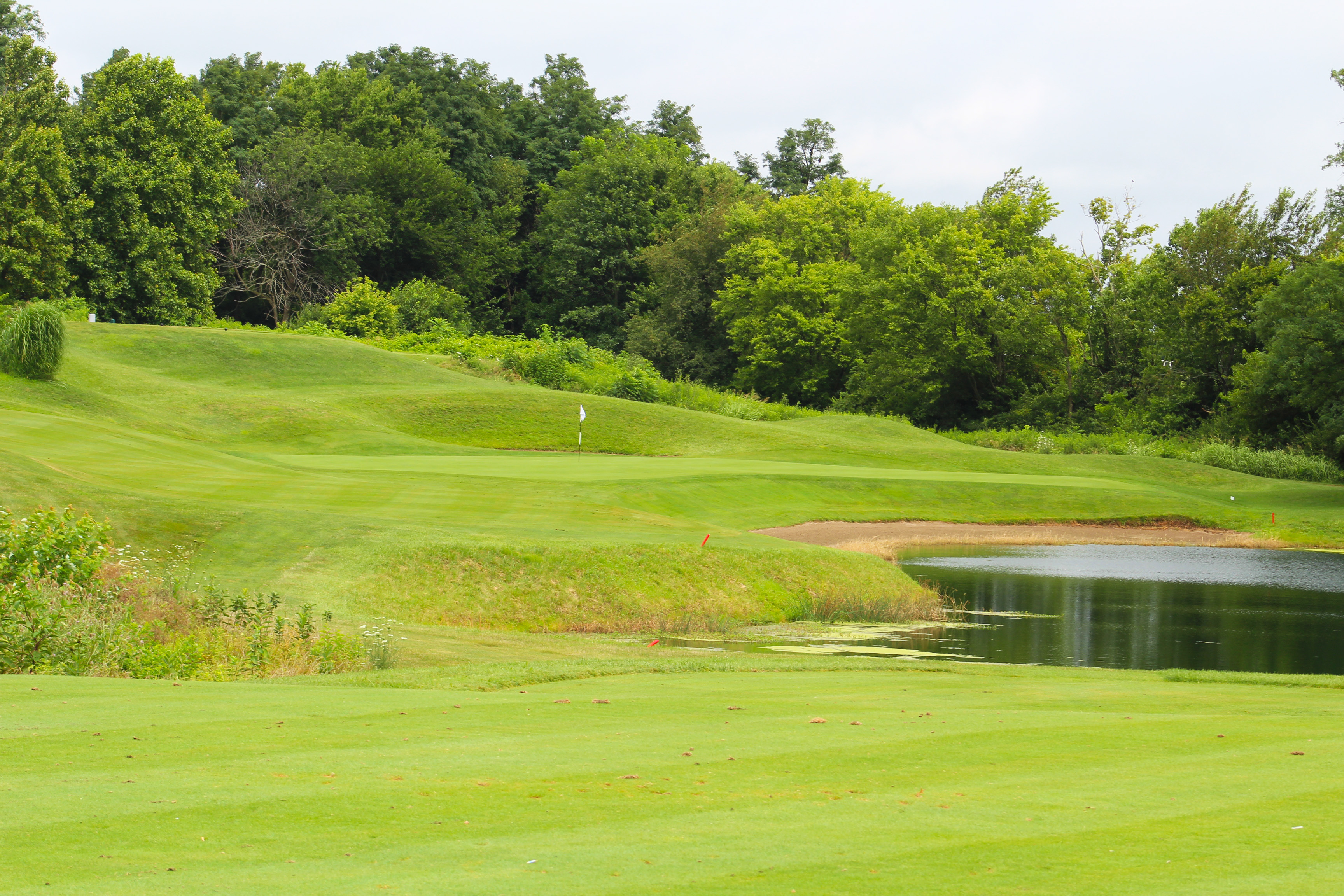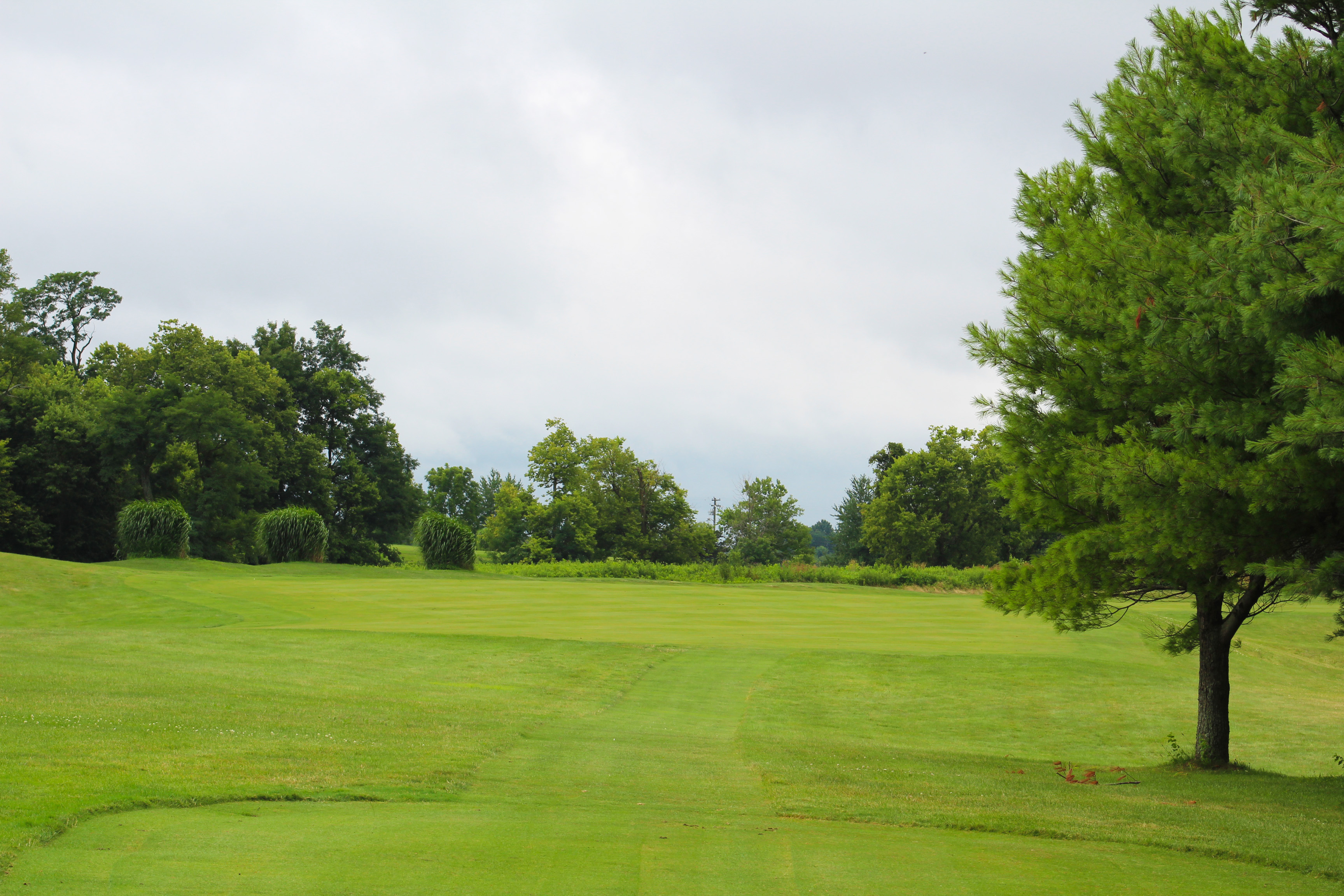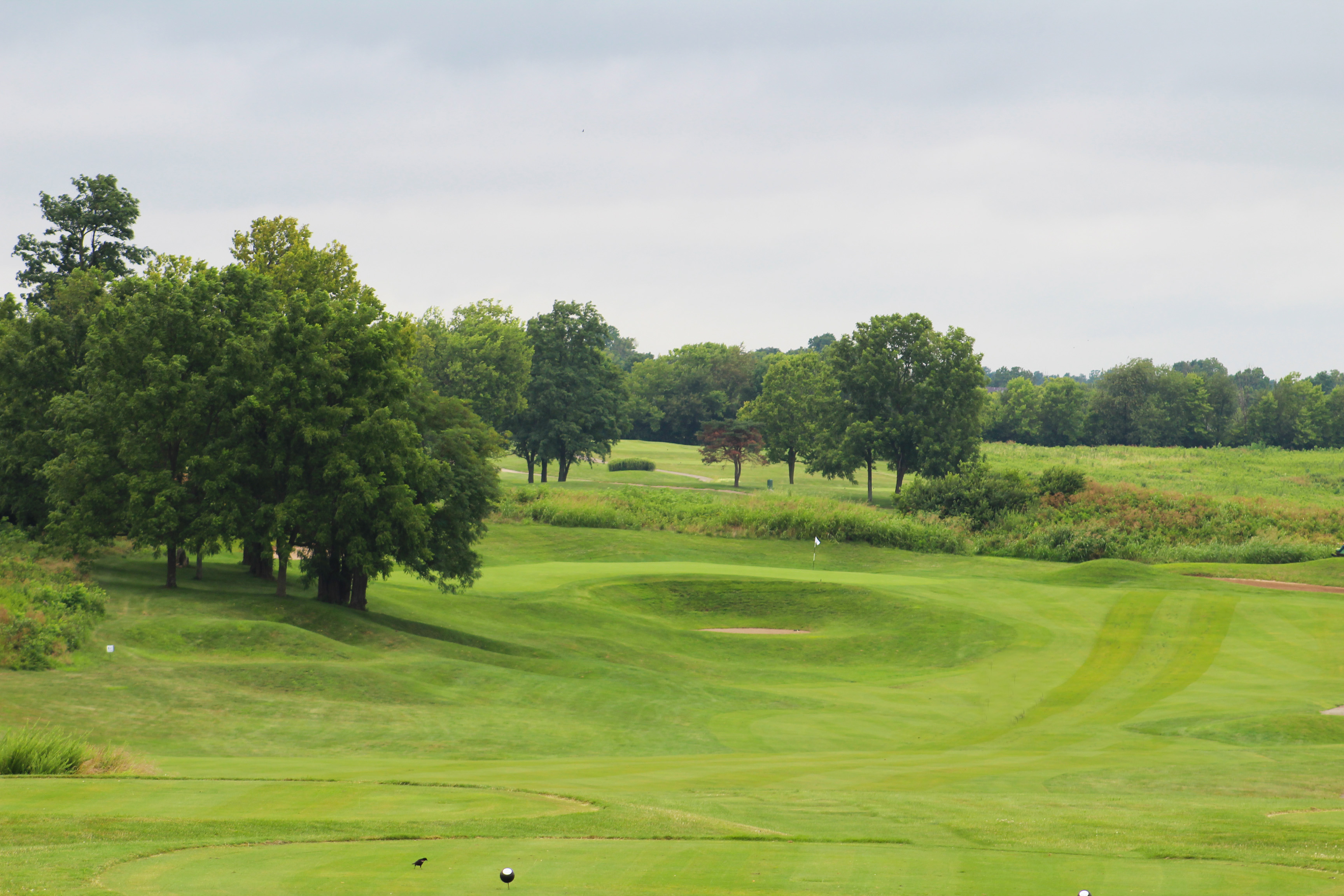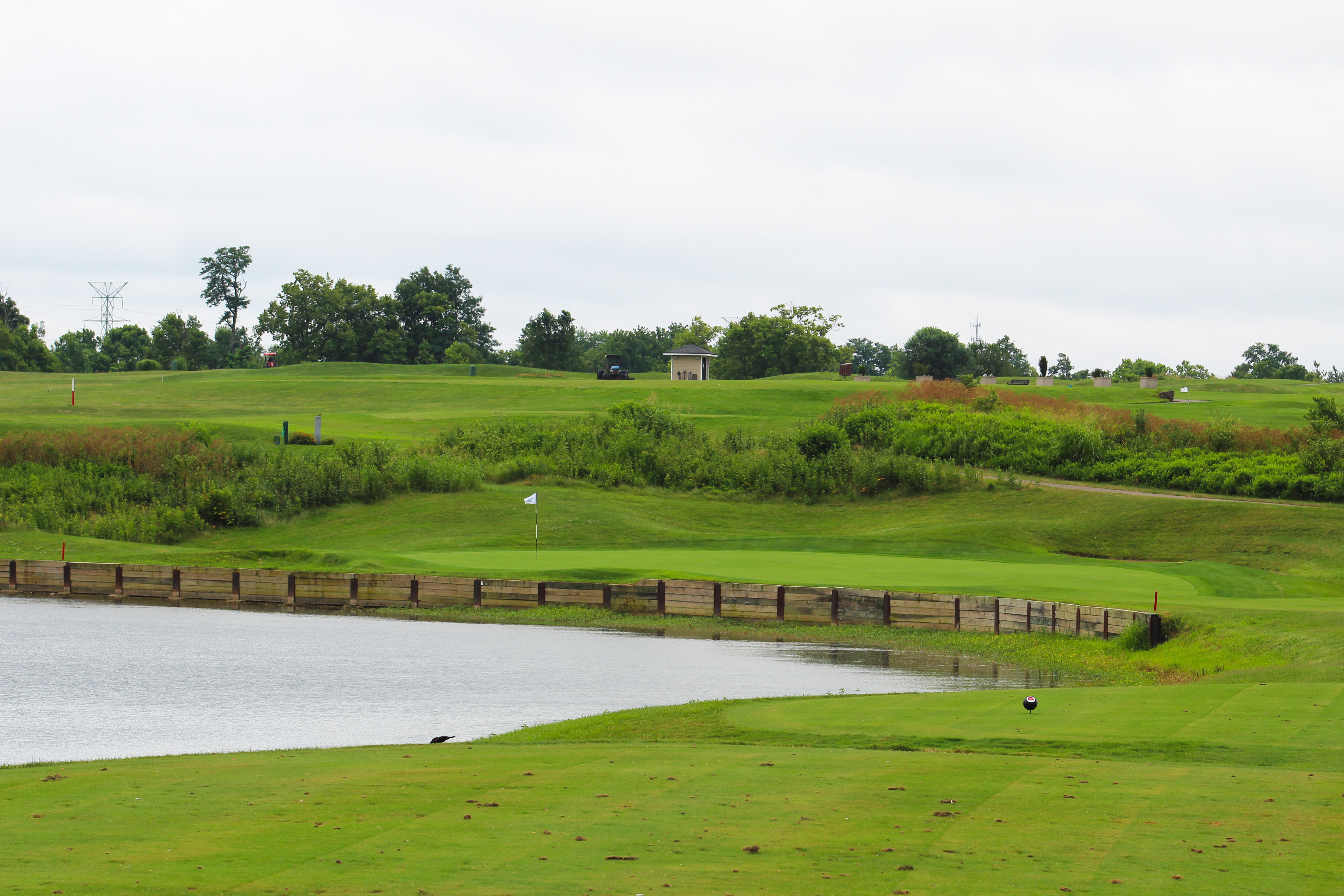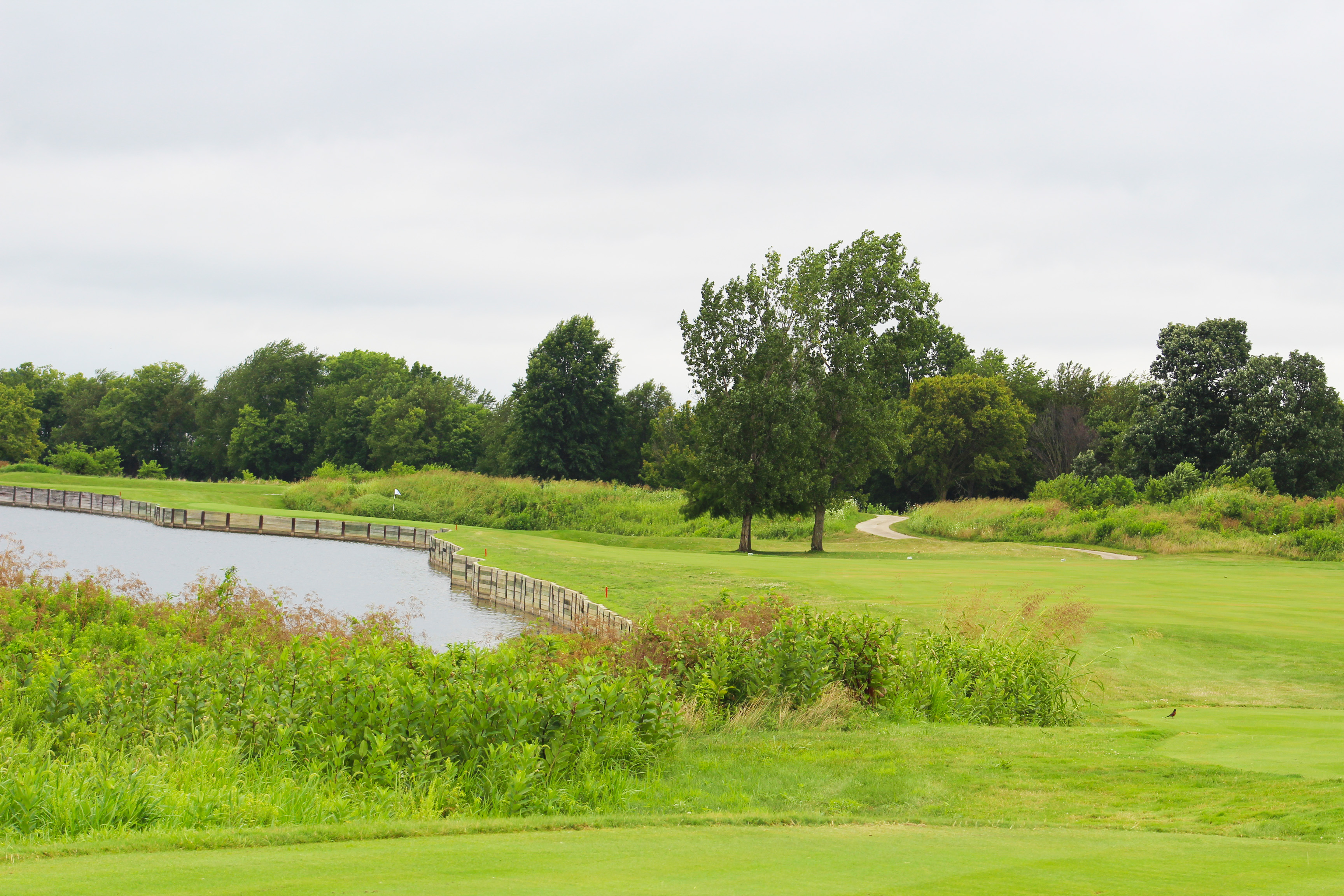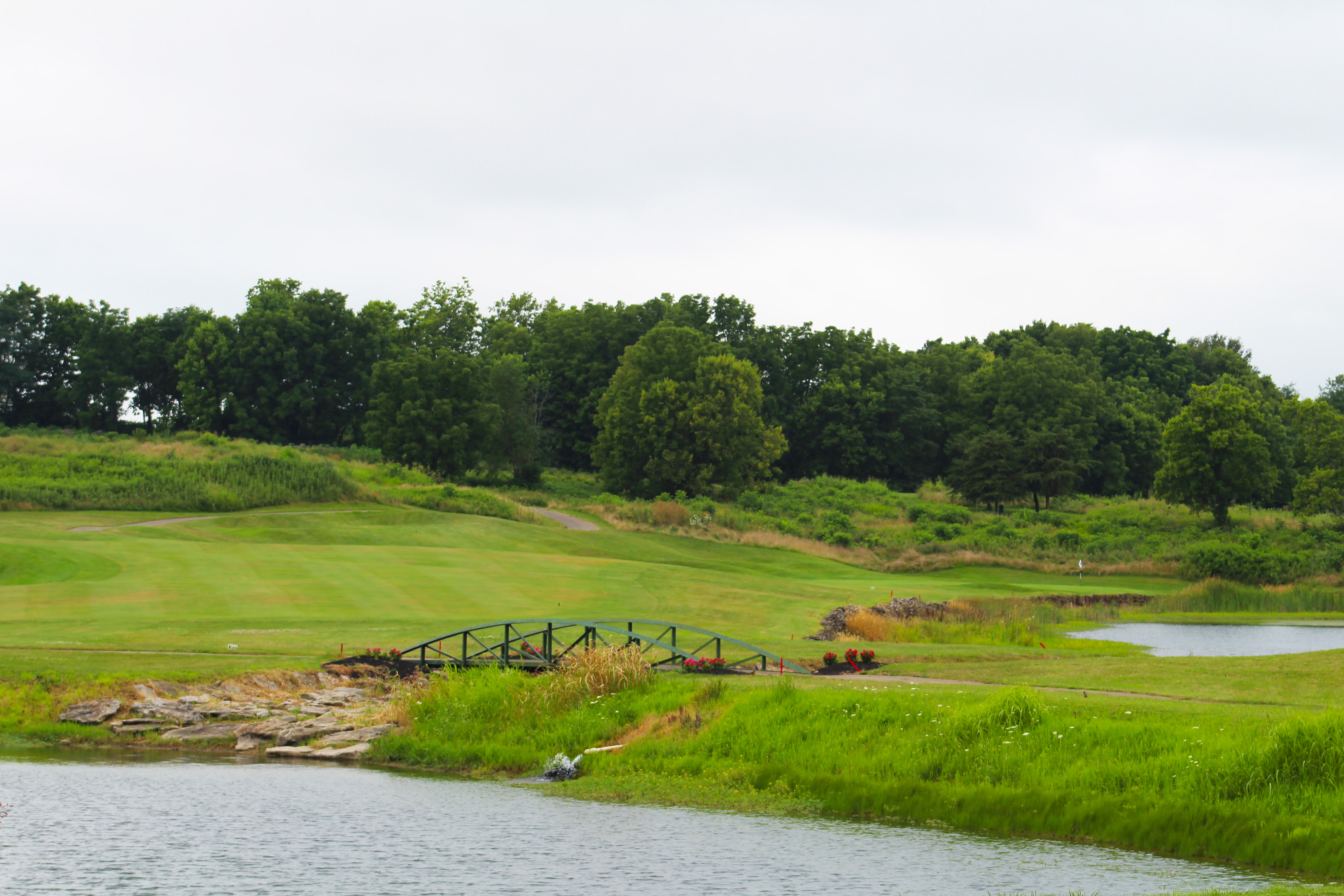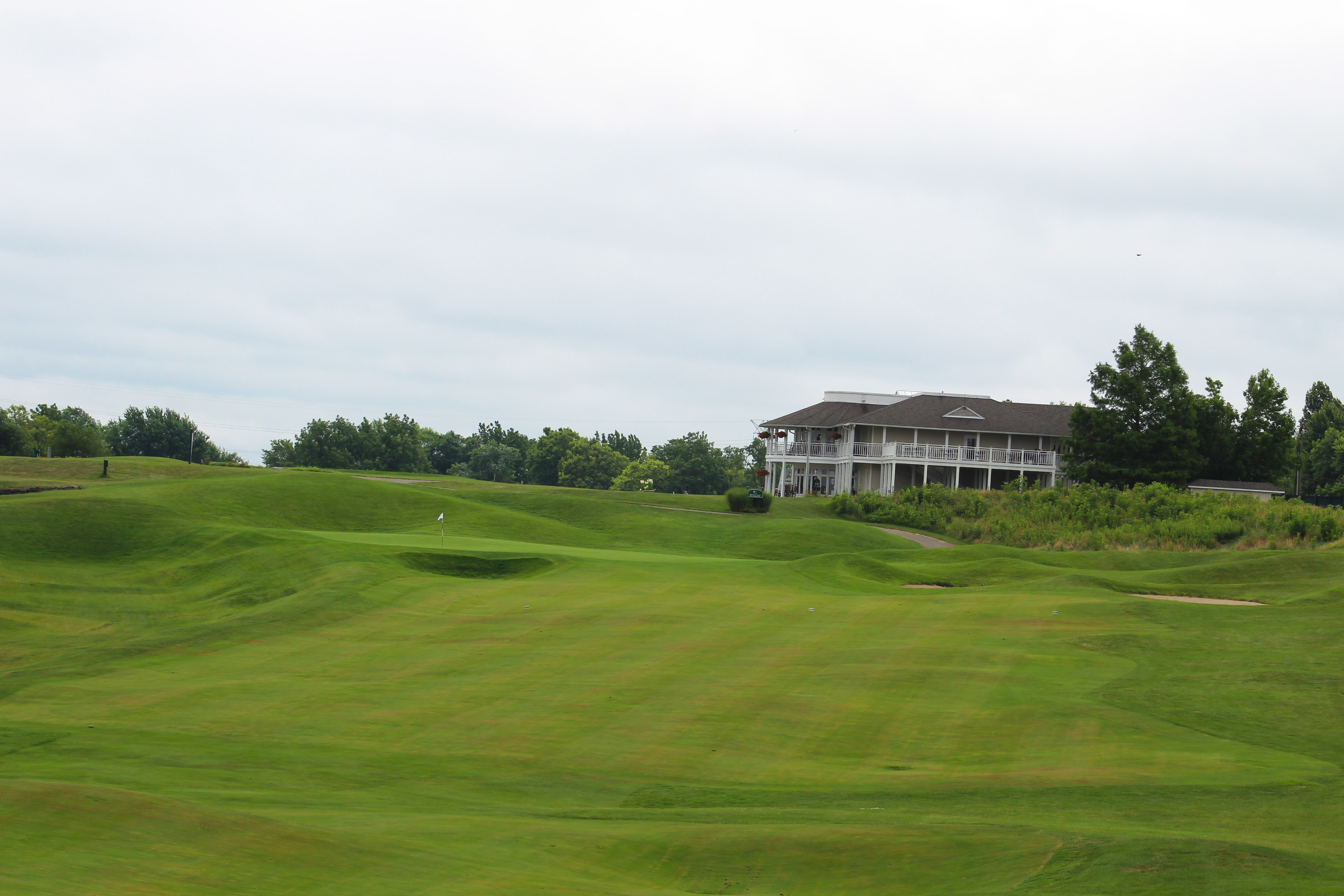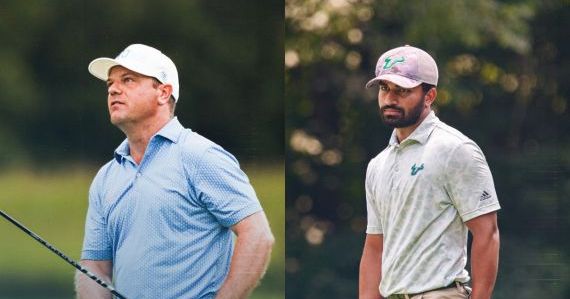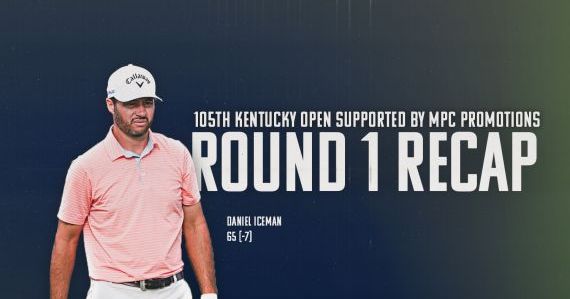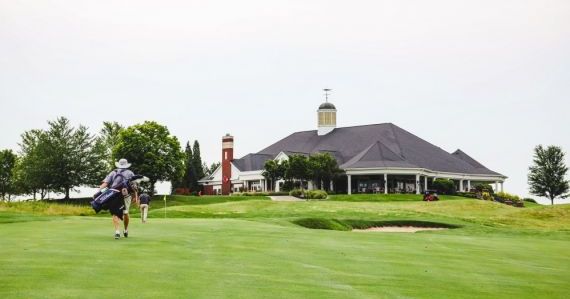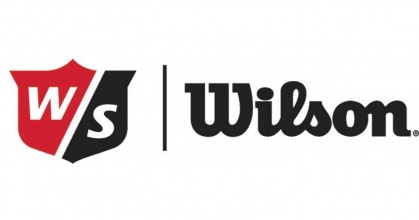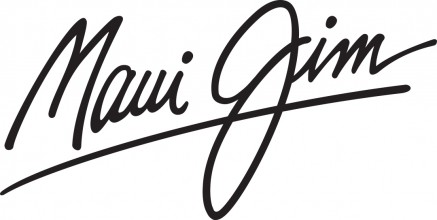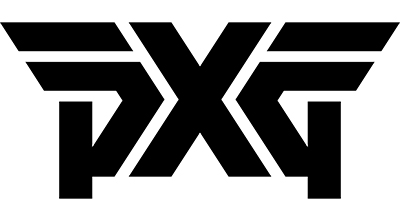
News
Course Preview: Kearney Hill Golf Links
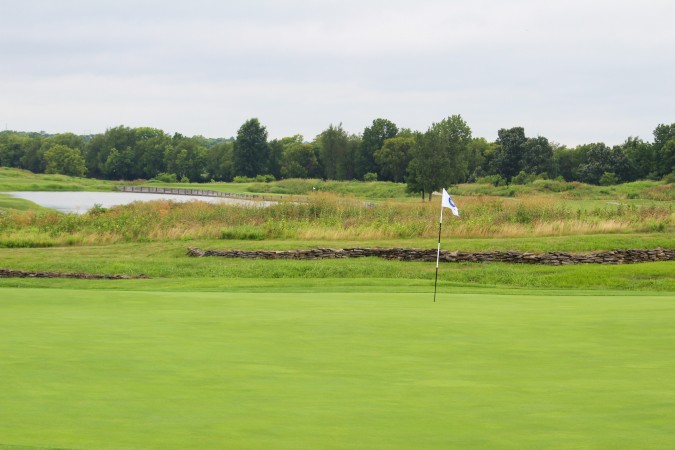
One of the most historic weeks in Kentucky golf is nearly upon us. For the 100th time, the Kentucky Open Championship will be contested. The venue for such a significant event needed to be great and Kearney Hill Golf Links passes that requirement with flying colors.
The 1989 design by Pete and P.B Dye has hosted some of the most presitigous golf tournaments in the country, including the U.S. Amateur Public Links Championship in 1997, the U.S. Women’s Amateur Public Links Championship in 2007, and the Girls Junior PGA Championship in 2018. It also hosted a PGA Tour Champions event, the Bank One Classic, from 1990-1997. It last hosted the Kentucky Open 2005, which was won by Cale Barr with a score of 208 (-6).
Regarded as one of the best public golf courses in the state, many Kentucky golfers have visited Kearney Hill to spectate or try their hand on the fabled layout. For those yet to visit Kearney Hill who will make their first visit during Kentucky Open week, Chris Boysel, PGA Head Golf Professional expects first-time players and fans to be wowed when they arrive.
“What gets people the most when they first visit our facility are the sights and views,” Boysel said. “This is one of the few courses in the state where you can see almost every hole from the clubhouse because of how open it is. Since there isn’t much of anything to obstruct the landscape, we get some unbelievable sunrises and sunsets here. If you get here early in the day, you’ll probably be treated to a beautiful sunrise, and the people finishing up late will get a spectacular sunset on the way out.”
Boysel and the staff at Kearney Hill have prepared for the event by getting the course in tip-top shape via restricting the course to cart path only for the last several weeks and getting the layout in peak condition by the time the competition begins on Tuesday, July 30.
“We are very honored to be hosting the 100th Kentucky Open,” Boysel commented. “An event with this amount of star power is a nice feather in our cap. It’s flattering to have the course considered worthy of hosting such a big tournament. Getting some attention from the public eye by hosting a popular tournament is always nice for us as host facility.”
The golf course itself is a classic Dye design. There are a few template Pete Dye holes which are outlined below in the hole-by-hole descriptions. Tough enough to begin with, the course’s difficulty is only accentuated when the wind begins to blow, a common occurrence according to Boysel.
“Since this golf course is so exposed, when the wind blows it gets tough very quickly. Some of the harder holes here like the 4th, 9th and 13th tend to play directly into the prevailing wind which can make each of those play brutally hard.”
Although the rough will be thicker than usual during the Kentucky Open, Boysel says driving is not a major priority as it relates to going low at Kearney Hill. The players who do go low will be the ones that are sharp with their irons and placing shots on the correct portions of the greens.
“You could hit all eighteen greens at Kearney Hill and three-putt every single one if you hit it on the wrong side each time. 7, 8, 9, 15, and 16 really stand out to me as greens with a lot of trouble waiting to happen.”
On the topic of the 15th and 16th, those holes begin an exciting final stretch that has seen many good rounds come to a screeching halt. Boysel documented a player in the 2017 Lexington City Championship who stood on the 15th tee leading by four and ended up losing by two strokes because of how he played the closing stretch.
“15-17 is kind of our Amen Corner part of the course. Holes each lined by water that in theory shouldn’t play that hard, but when you have the pressure to win on top of one loose swing, a lot can go wrong.”
Despite the difficulty of the closing stretch, Boysel believes that if the weather conditions are light, the winner will finish the event between twelve and sixteen under par. If the wind is stronger than usual the score will naturally be several strokes more, but players have shown the ability to go low here when they understand how to play the course.
“Yealimi Noh, who won the Girls Junior PGA Championship here in 2018, finished the event twenty-four under par. There was no wind and she was on top of her game which allowed her to dominate. Someone in the Kentucky Open could easily do the same thing.”
Hole-by-hole layouts of Kearney Hill Golf Links are as follows:
Hole 1 – Par 4 – 433 yards: Kearney Hill opens with a par-four of moderate difficulty that curves slightly right. The fenced-in trees right of the fairway will be a no-play zone and players will be required to take a drop with no penalty if their ball comes to rest within that area. The rough on that side of the fairway tends to be some of the thickest on the course. Those who go left instead will need to be weary of the out-of-bounds that could derail a player’s tournament from the get-go.
Hole 2 – Par 3 – 185 yards: This is probably considered the easiest short hole to make a birdie on. The green is guarded by bunkers on all sides, but a mid-iron to the middle of the green will always give a player a decent look at birdie here.
Hole 3 – Par 5- 512 yards: Because of how this hole is angled, the farther away the player is from the water on the right, the easier the hole becomes. Tee shots that favor the left side will avoid the pond by nearly 100 yards. If the tee shot is long enough, the angle to reach this green in two becomes much less scary and requires less of a carry over the water that comes all the way to the front edge of the putting surface. A bunker left of the green guards the bail-out area for those who are unwilling to fire directly at the green.
Hole 4 – Par 4 – 456 yards: Perhaps the most difficult hole on the outward nine. If playing into a strong wind as Boysel mentioned above, this uphill par-four can give players fits. The bunker short-left of the green stretches nearly 100 yards from front to back and can offer arguably the hardest shot on the golf course if found more than 50 yards away from the green.
Hole 5 – Par 4 – 375 yards: After the difficulty of the 4th, players enter one of the most scorable sections of the golf course beginning with the 5th. Its key feature is the deep grass bunker short and left of the putting surface which can create nearly impossible lies to get up and down from if found. Avoiding that pit, however, and utilizing the green’s slopes correctly can yield a great birdie opportunity.
Hole 6 – Par 4 – 348 yards: If the 6th is playing with no wind to protect it, long-hitters could scare the front portion of the green. A multi-tiered putting surface makes it vital to find the correct section as failing to do so could turn a possible birdie hole into a bogey.
Hole 7 – Par 5 – 578 yards: Playing this hole from the short grass is essential. Out-of-bounds left and another historically thick rough spot right of this fairway make the longest hole on the course quite tough if the fairway is not found. There is a run-off area over this green which is the one spot of short grass players will want to avoid. If a player finds that area, they will have plenty of options with how they want to play the shot at hand, but none will make the up and down simple.
Hole 8 – Par 3 – 210 yards: Missing this green right is potentially disastrous as sand, a thick primary cut of rough and native grass await those misses. As one of the largest greens on the property, putting from one side of the green to the other can be an adventure if the hole is cut on the far left or far right.
Hole 9 – Par 4 – 469 yards: The front nine ends with a dogleg right with some of the only trees on the golf course in play in between the fairway and driving range. The hole’s length allows players one of their only opportunities to hit a run-up shot with nothing guarding the front edge. A bunker on the right is this wide green’s only protection.
Hole 10 – Par 4 – 389 yards: The inward nine begins with a couple of reasonable scoring opportunities. The 10th features one of the course’s narrowest fairways and a series of mounds left of the fairway which can create yet another difficult lie situation. Avoiding those and hitting the ball in the fairway should reward players with a chance to generate momentum coming in.
Hole 11 – Par 4 – 382 yards: The tree left of the fairway has the potential to hinder shots that come near it. If far enough back of it, simply hoisting a wedge over it to the green is an easy solution. Once around it and on the green, players will notice how the putting surface slopes from right to left and can funnel balls away from the hole if they land in the wrong spot.
Hole 12 – Par 3 – 211 yards: If this hole is cut on the right side of the green with the tee placed on the back box, buckle up. That combination makes this one of the hardest one-shot holes in Kentucky. The good news is this is one of the flattest putting surfaces at Kearney Hill, so once on, players can expect to find one of their simplest putts during the round.
Hole 13 – Par 4 – 468 yards: The critical part about this hole is not missing the fairway left. If that happens, a ball-search is likely, and even if the ball is found, playing it may not be worth it. Two large bunkers will catch balls that miss the green right or left and only complicate one of the hardest holes on the course.
Hole 14 – Par 5 – 545 yards: Downhill off the tee and going slightly back up the hill towards the green, this is a reachable hole where having an eagle putt is possible if played correctly. Those who go for the green on their second shot need to avoid the extremely deep bunker short of the green and the testy downslopes of rough past the green. Being one of the most unique green shapes in the state, players who lay up each round could face three completely different shots when approaching this green.
Hole 15 – Par 3 – 189 yards: The stretch Boysel compared to Amen Corner begins here. Water awaits any shot that misses the green short and left. Long and right are no bargain either as the water will still come into play for any shot that is struck thin from one of those positions. Walking away with par is a great score on this hole.
Hole 16 – Par 4 – 411 yards: With shades of the 18th at TPC Sawgrass, Dye asks players how close they are willing to come to the water off the tee in order to have a good angle with the approach. Those not willing to take the water on will then have to worry about dodging trees which impacts those coming into the green from the right side of the driving zone. Trouble awaits everywhere on this hole, making this short par-four anything but easy.
Hole 17 – Par 4 – 433 yards: After facing a tee shot with water on the left, a new penalty area now guards the right side of the 17th fairway. This time, playing away from the water makes the approach shot significantly longer as opposed to the reward players will receive who take on the water’s edge. The pond still makes its presence felt greenside, with only a small strip of grass separating a player from being on the dance floor versus being wet.
Hole 18 – Par 5 – 535 yards: After an exhausting, grueling three-hole stretch, players reach the finish line and are welcomed with a reachable par-five. What was once a bunker on the left side of this green is now entirely grass and makes shots from that area easier, even if it remains significantly below the level of the green. Come Thursday afternoon, one golfer will stand on this green victorious, as the champion of the 100th Kentucky Open.
To view tee times for the opening rounds on Tuesday and Wednesday, click here. Join the conversation on social media throughout the tournament by using the hashtag #100KYOpen.
